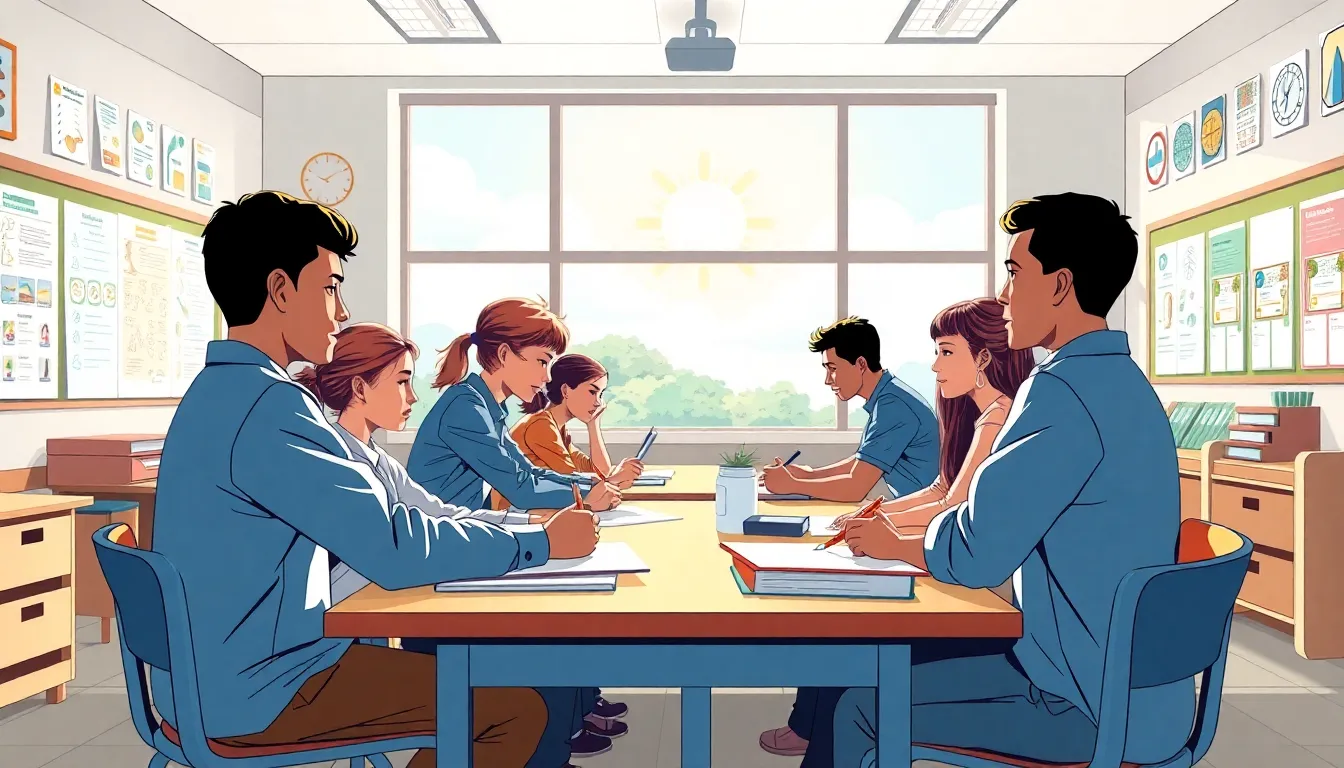Table of Contents
ToggleIn today’s world, education isn’t just about textbooks and tests; it’s a rollercoaster ride filled with unexpected twists and turns. From skyrocketing tuition fees that can make anyone’s wallet weep to the endless debates over remote learning, the challenges in education today are as diverse as the students navigating them. It’s a circus out there, and everyone’s trying to find their seat on the Ferris wheel of knowledge.
As society evolves, so do the issues plaguing our educational systems. Whether it’s the struggle for equitable access or the battle against outdated curricula, these problems demand attention. So buckle up as we dive into the wild world of education issues today, where every twist brings new insights and every turn sparks a conversation that’s long overdue.
Overview of Education Issues Today
Education today faces numerous challenges. Rising tuition costs impact student enrollment, forcing many to reconsider their educational paths. Stagnant wages exacerbate financial burdens, causing increased student loan debt. Remote learning, introduced during the pandemic, has proven effective for some but highlights disparities in access to technology.
Equity in education emerges as a pressing concern. Many students in underfunded schools lack essential resources, resulting in a significant achievement gap. Differences in funding allocate more resources to wealthier districts, leaving lower-income areas at a disadvantage.
Curriculum relevancy also generates debate. Educators and policymakers increasingly question traditional methods, seeking to update content to meet the needs of today’s diverse student population. Advocates push for the inclusion of cultural competencies and critical thinking skills in lessons.
Mental health awareness continues to gain traction in education settings. Students face unprecedented pressures, from academic expectations to social media influences. Schools are beginning to prioritize mental health resources, helping provide students with necessary support systems.
Sustainable practices within educational institutions become crucial as climate concerns escalate. Schools are exploring eco-friendly initiatives, integrating sustainability into curricula. Such efforts aim not only to educate but also to inspire students to take action.
Overall, these interconnected issues reflect a complex landscape requiring innovative solutions and ongoing dialogues among stakeholders. Each challenge presents a significant opportunity for growth and improvement within education systems.
Funding Challenges

Funding challenges significantly impact the education landscape today. Financial resources play a crucial role in determining the quality of education that students receive.
Public vs. Private Funding
Public funding relies on local and state taxes, influencing the resources available to schools. Private funding often occurs through donations, grants, or tuition, creating disparities in financial support. Schools in affluent areas benefit more from private funding, while those in lower-income districts struggle with limited public resources. Such discrepancies exacerbate the existing inequities in educational quality and access.
Inequities in Funding Allocation
Inequities in funding allocation remain a stark issue in education systems. Schools serving predominantly low-income students receive fewer resources compared to those in wealthier neighborhoods. The achievement gap is further widened as underfunded schools struggle to provide essential materials, technologies, and experienced staff. Data indicates that nearly 90% of school funding derives from local property taxes, leading to significant disparities that impact student performance. Addressing these funding inequities is essential for establishing more equitable educational environments for all students.
Access to Quality Education
Access to quality education remains a critical issue in today’s educational landscape. Various factors contribute to the ongoing disparities, significantly affecting student outcomes.
Urban vs. Rural Disparities
Disparities between urban and rural educational institutions influence student access to resources. Urban schools often receive more funding due to higher property taxes, leading to better facilities and programs. Conversely, rural schools face challenges such as limited access to technology and extracurricular activities. Enrollment may decline in rural areas as families move to urban centers where opportunities are more abundant. Furthermore, rural educators may lack professional development compared to their urban counterparts. Addressing these disparities creates a more equitable educational environment for all students.
Special Education Needs
Meeting special education needs presents another significant challenge within the education system. Schools with limited resources struggle to provide adequate support for students with disabilities. Staffing issues often arise, as qualified special education teachers are in short supply, particularly in lower-income districts. Early intervention is crucial, yet many students receive support too late to make a meaningful impact. Training for general education teachers also falls short, as they may not possess the tools necessary to accommodate diverse learning needs. Advocating for increased funding and better training opportunities is essential for ensuring that all students receive a quality education tailored to their needs.
Technology Integration in Education
Technology integration transforms educational experiences but presents significant challenges. Schools often face disparities in access to digital tools, directly impacting student learning outcomes.
Digital Divide
The digital divide refers to the gap between students who have reliable access to technology and those who do not. About 35% of households in low-income areas lack high-speed internet. This inequity creates barriers to achieving academic success, especially in remote learning environments. Schools in affluent districts often provide laptops or tablets, while underfunded schools struggle to equip their students. As a result, students lacking devices may fall behind, unable to participate in critical learning opportunities.
Impact of Online Learning
Online learning has reshaped educational methodologies, especially since the onset of the pandemic. Students experience greater flexibility in their schedules, allowing for personalized pacing. However, it also exposes gaps in digital literacy as children may require additional support transitioning to online platforms. Teachers are exploring various engagement strategies to keep students motivated, yet attendance disparities persist. Research shows that 40% of students feel less connected to their peers in virtual settings. As schools adapt, understanding these complexities remains crucial to building effective online learning environments.
Teacher Shortages and Retention
Teacher shortages significantly impact educational quality. Various factors contribute to this ongoing crisis.
Causes of Teacher Exodus
High stress levels and low pay lead many educators to leave the profession. Inadequate resources create additional burdens, making it hard for teachers to deliver optimal education. Furthermore, limited administrative support can leave teachers feeling isolated and undervalued. Job dissatisfaction often arises from unrealistic expectations placed on educators. Many also face burnout due to increasing workload and administrative demands. A recent survey indicates that about 40% of teachers plan to leave the field within five years, highlighting urgent issues in job satisfaction.
Strategies for Retention
Investing in competitive salaries can enhance teacher retention significantly. Providing mentorship programs fosters professional development and creates supportive networks for new educators. Additionally, offering mental health resources helps address stress and burnout. Schools can enhance job satisfaction by promoting work-life balance through flexible scheduling options. Engaging teachers in decision-making processes empowers them and encourages commitment. Focusing on these strategies can lead to a more stable teaching workforce, ultimately improving the educational environment for students.
Education today faces a multitude of challenges that require urgent attention and innovative solutions. The disparities in funding access to technology and curriculum relevance highlight the need for systemic change. Addressing these issues is crucial for creating equitable educational environments that cater to all students.
As stakeholders engage in ongoing dialogues about education reform it’s essential to prioritize mental health support and teacher retention strategies. These factors play a significant role in fostering a positive learning atmosphere. By focusing on these interconnected challenges the education system can evolve to better serve today’s diverse student population and prepare them for a successful future.







